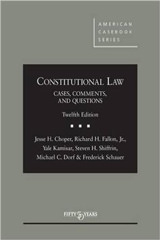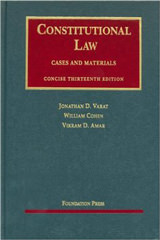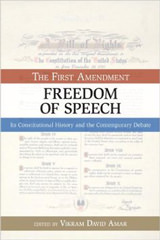As the number of federal lawsuits challenging the ambitious and in some cases unprecedented assertions of federal executive power being made by the new administration continues to climb (with dozens of legal challenges having been filed in the last three weeks), it is important that everyone understand what it means when a headline says—as many these days are saying—something like “Federal Judge Grants Motion to Block XYZ Action/Policy.” In particular, citizens (whether trained in the law or not) should, in these dizzying times, appreciate exactly what the federal judiciary—seen by some as the only meaningful guardrail to protect the Constitution—is being asked to do these days.
Let’s put to one side the troubling possibility—but at this point only a possibility—that the administration will flout clear and specific directives from federal judges ordering executive branch officials to do, or not do, something. Even though Vice President JD Vance in the run-up to the election apparently (and dangerously) advocated for executive disobedience of federal judicial decrees, so far no such direct defiance seems to have occurred. To be sure, sometimes a judge’s order may need to be amended to close loopholes in order to prevent executive officials from disregarding its spirit. Moreover, court-imposed setbacks (sometimes taking the form of slowdowns) to the presidential agenda often prompt harsh political criticism of “judicial activism” by high executive officials (including the President himself). But many of these criticisms are themselves crafted carefully so as to avoid direct conflict with, and disobedience of, judicial decrees. For example, the much-repeated tweet earlier this week by Vice President Vance that “Judges aren’t allowed to control the executive’s legitimate power,” need not be understood as a call to (or prediction of) disobedience; as written the tweet is something of a truism, that the judicial branch should not overstep its bounds. After all, the tweet defends only “legitimate” (i.e., constitutionally permissible) executive power, and says merely that judges shouldn’t invade the constitutionally protected sphere of another branch. Importantly, the tweet does not deny that judges play a special role—one that the executive branch must and will respect—in deciding what is legitimate and what is not. In other words, the tweet doesn’t take direct issue with what Chief Justice John Marshall wrote in Marbury v. Madison (and what Chief Justice John Roberts has in effect reaffirmed in many fora) that it is “emphatically the province of the judiciary to say what the law is.” (That observation certainly doesn’t mean there are never instances in which another governmental branch or actor acts inappropriately if it proceeds on a different constitutional understanding than that announced by courts, or even the Supreme Court; but it has rightly been understood for many decades to mean that if federal courts conclude that certain actions by other government branches are forbidden by the Constitution, the other branches respect that conclusion and try to overturn it only by judicial appellate and political-reform channels.)
So we don’t yet have any examples of executive branch defiance of judicial power that would prompt federal judges to hold (or threaten to hold) members of the President’s team in contempt of court. And hopefully we will not see such executive disobedience anytime soon. (In this connection, it is heartening that among the jurists who have granted relief slowing or halting some of President Trump’s directives, there have been judges appointed by Presidents Reagan, Bush, and even Trump himself, and not just judges appointed by Presidents Carter, Obama and Biden—the more bipartisan the judicial reaction, the less likely executive defiance would be.) But what we are seeing is the executive branch taking scores of actions that put pressure on courts to clarify what the Constitution’s limits really are. Some of the President’s actions (such as the birthright-citizenship order and the firing of the head of the National Labor Relations Board) are in clear conflict with applicable Supreme Court precedent (which will be followed by lower courts until and unless the Supreme Court chooses to revisit things). And other of the President’s actions (failures to spend money in potential violation of congressional mandates and in ways that may breach contractual or quasi-contractual arrangements with States and others) are likely to be found illegal, at least in part, by courts as cases make their way through the system. But the sheer volume and breadth of these executive forays and the legal issues they implicate is truly breathtaking, and is no doubt creating a strain for the numerous federal district court judges confronted with legal challenges in the first instance.
That brings us back to what the headlines describing recent judicial decisions really mean. And to understand them, we need to appreciate the ordinary life-cycle of a federal lawsuit challenging executive action. Typically, a plaintiff affected by executive-branch action (e.g., a prospective natural-born citizen or a federal employee or grant recipient) goes to federal court asking the district (trial) court judge to invalidate the challenged action and protect whatever the plaintiff has at stake. But such a process of full adjudication by a federal trial court (to say nothing of the inevitable appeal to the court of appeal and/or the Supreme Court) can take a great deal of time. This is especially true given, as noted above, the factual and legal issues raised by most of President Trump’s initiatives are very broad and complex. So what plaintiffs challenging government action obtain right away is what we litigators call “preliminary” relief. (Such relief usually is known as a Temporary Restraining Order, or TRO, or a Preliminary Injunction.) Such preliminary relief is to be contrasted with “permanent” relief that may be awarded later. Permanent relief is not permanent in the sense that it is necessarily unending—for example, a permanent injunction in an intellectual property case may restrain the defendant from using plaintiff’s intellectual property only for a fixed period of time. “Preliminary” relief in this context means simply that relief is sought prior to a full-blown determination by the court of whether the defendant is or is not violating the law. “Permanent” relief, by contrast, means simply relief that is awarded after a trial or other full-blown process (such as summary judgment) that determines once and for all, at least as the court issuing the remedy is concerned, who wins and loses on the merits of plaintiff’s assertion that defendant’s actual or imminent actions are unlawful.
Sometimes it is said that preliminary relief seeks to preserve the status quo in a case pending fuller adjudication of the merits. But deciding what the status quo is in a given setting can be hard—when federal benefits are authorized to be paid but haven’t yet been disbursed, is the status quo the fact that money has not yet been paid or the fact that recipients expect, based on the past track record, that it will be received? Perhaps a better way to understand what federal courts confronted with requests for preliminary relief are trying to do is this: the court considering a request for preliminary relief should—in full recognition of the fact that the judge can’t be sure who will win and lose on the merits after all the briefs, evidence and arguments are considered—try to limit the amount of harm either party may suffer on account of the actions of the other. To that end, courts consider at least two big factors: the likelihood that each party will prevail on the merits, and the so-called “irreparable” injury that a party will suffer if the other party is allowed to do what it wants, and that turns out to be illegal. (The formulation federal courts around the country use often includes a few other factors as well, but oftentimes, those other factors are somewhat duplicative of the two big ones I identify here, so for simplicity let’s limit our focus to these two.)
Articulating the factors within the test is easier than applying them. For starters, how do we know which side is likely to win on the legal merits when we haven’t yet had a trial or a ton of briefing? After all, if we could know with any confidence who’s going win at the outset of a case, why would be ever need a trial? That is all true, but in the real world we must do our best, recognizing that mistakes and mispredictions are inevitable. We ask each side to give the court (on a compressed timeline leading into an abbreviated hearing, kind of a super-mini trial) its best evidence of key facts and its best legal arguments. And based on that preliminary snapshot, the court decides how plausible the legal challenge and the defense to it are.
Some formulations of the preliminary-injunction test suggest a plaintiff who sues for preliminary relief needs to establish a “likelihood” of success on the merits, a phrase which might be understood as a requirement that a plaintiff must show it is more likely to win than to lose. But the second part of the test—focusing on so-called “irreparable” harms—indicates that sometimes a plaintiff who has made a decent but perhaps not more-likely-than-not-to-succeed claim should still receive preliminary injunctive relief, on the ground that it will be injured much more problematically if no preliminary injunction is issued and it does end up winning at the end of the day than the other side would be if a preliminary injunction is entered and that side ends up winning.
An example will help illustrate this point: imagine Parties A and B are neighbors who dispute the boundary line between them and the ownership of a stand of old-growth trees along the property line. A wants to keep the trees standing for their shade and beauty and historical significance; B wants to cut them down and sell the lumber, at a time when lumber prices are high. Imagine B has hired a crew to come cut the trees down. A goes to court and asks for an injunction preventing B’s crew from proceeding. (Here we see the complexity of a status-quo mindset; is the status quo the fact that the trees are standing, or the fact that B’s crew is scheduled and prepared to remove them?) Imagine that at the preliminary-injunction hearing A produces documents and arguments suggesting that it has some chance, say 35%, of proving ownership. Even though 35% is less than 50+%, a court very well might (and probably should) issue the preliminary injunction preventing the trees from being cut down on the following reasoning: If the trees are cut down and A does end up winning, there is precious little that B can to do effectively compensate A. B can give A money, but money doesn’t really replace unique old-growth trees. By contrast, if an injunction issues and B ends up winning, A can compensate B for any lost profits B incurs should lumber prices fall during the time it takes to have a trial. And since money can replace (or, shall we say, repair) money, we say A’s possible injury (if it ends up winning on the merits) is more “irreparable” than B’s possible injury if it wins on the merits. Both sides might suffer injury depending on whether or not an injunction issues and the ultimate outcome of the case. But A’s potential injuries are more irreparable—harder to measure and harder to undo—than B’s.
In the context of the many current lawsuits against the Trump administration, federal judges are having to apply these factors. Judges, based on somewhat tentative briefing and factual development, must assess the likelihood of success on the merits after trial. That, given the factual and legal complexity, is a herculean task by itself. And many judges may change their minds about the strength of the legal challenges as the briefing unfolds. But when plaintiffs in this setting make colorable claims on the merits, and while both sides can genuinely allege “irreparable” harm that is at stake (frustration of the government’s ability to protect the health and welfare of the citizens and to stop fraud and abuse is something that cannot easily be remedied), the individual plaintiffs may often seem to have more potentially irreparable injury. For example, if an individual federal-funding recipient is denied medical care (in a way that is ultimately held to be unlawful) the harm to his health is more “irreparable” than are the cost savings the federal government might forego if that recipient is given health care for a longer period than he was ultimately legally entitled.
Each legal challenge and each set of plaintiffs is, of course, distinct, as is each defendant. (Indeed, in some cases the defendant might welcome a motion for a preliminary injunction, insofar as the court’s resolution of such a motion might give the defendant information about the likelihood its actions will ultimately be invalidated, information that might help the defendant avoid sinking a lot more time and money into a course of action that may be destined for failure.)In any event, federal district courts today deserve our understanding and our support as they work feverishly through the cases currently pending, and do so in a politically hyper-charged environment. And, of course, in most of these cases the district court’s resolution of the merits is not much more than a placeholder; many of these lawsuits raise legal questions that the courts of appeals and/or the Supreme Court will need to take up, hopefully sooner rather than later. Appellate courts don’t do their best work under tight time pressure—we saw that at the Supreme Court in the Richard Nixon Tapes case (whose outcome was probably correct but whose opinion was a disaster) and again last year in the Colorado ballot-access case and the presidential immunity case. But the fury and force of the new administration’s “flood the zone” approach to government reform is going to force federal judges, trial and appellate, to be more nimble than they historically have been. Let us all hope they are up to the challenge.









